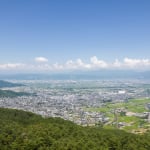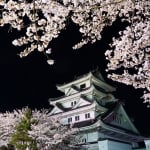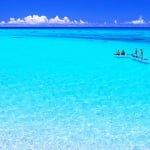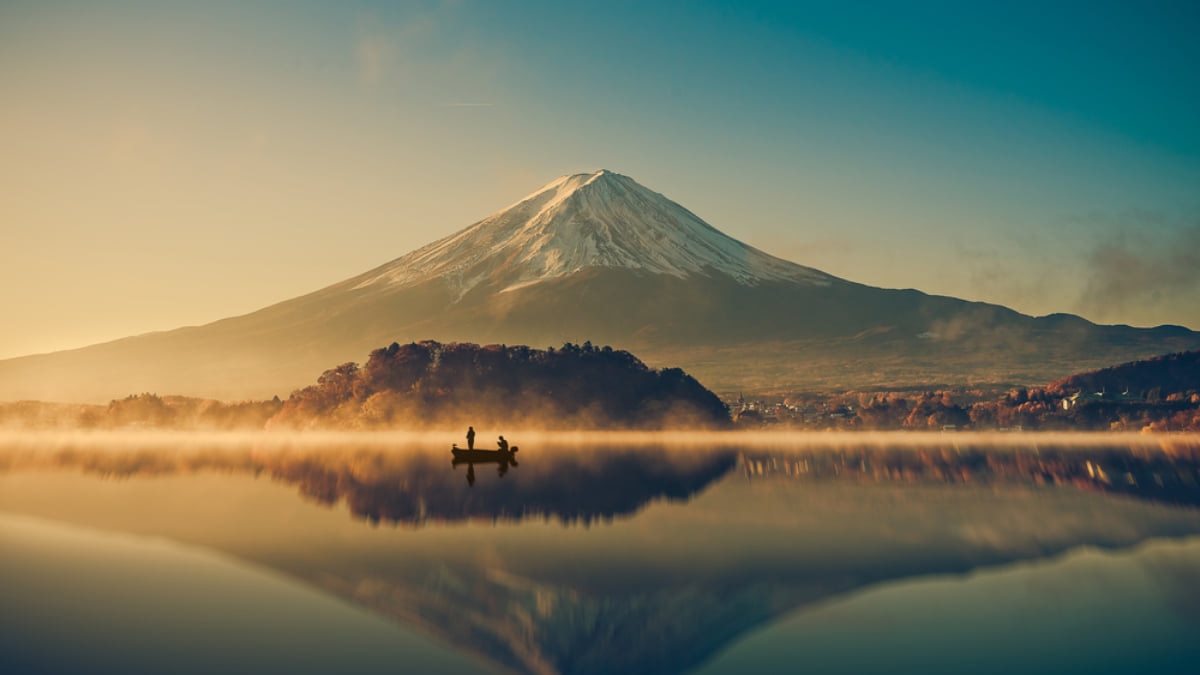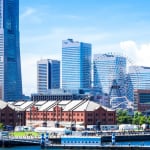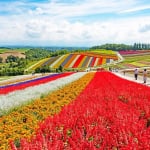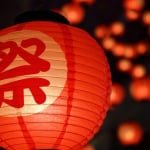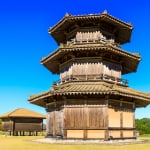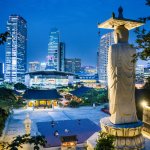Photo by FocusStocker/Shutterstock
How to Climb Mount Fuji, Japan’s Iconic Peak
One of the most famous mountains in the world and a symbol of Japan, Mt Fuji is often a top priority for visitors coming to the country and climbing to the top is often seen as an important milestone for those in Japan.
table of contents
[x] close
How to Climb Mount Fuji, Japan’s Iconic Peak
The Climbing Season
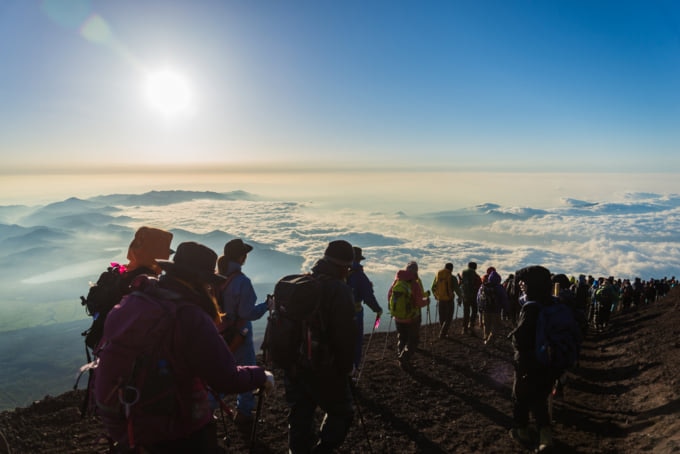
Photo by FocusStocker/Shutterstock
The trails and mountain huts along the slopes normally open in early July to the start of September, with the date changing each year depending on weather conditions.
Climbing during the season is quite safe but be sure to check the weather conditions before hiking. During the summer and early Autumn, Japan sees a number of typhoons which can make it dangerous to climb or stay on the mountain.
Climbing Off Season
Mt Fuji should never be climbed off season unless you are highly experienced and have the green light from local authorities. If you want to climb the mountain off season, you'll need to submit a climbing plan that lists all the details of your climbing attempt including route, schedule and equipment.
While climbing during the season is relatively simple and easy for most levels of fitness, off season is a completely different story. The paths are often covered with snow and ice that make it easy to slip and fall without the right tools and skills. Every year several inexperienced climbers attempt the off season hike and lose their lives or need emergency rescue.
If you're really adamant on climbing during this period, consider going with a tour, the guides are highly experienced at climbing Fuji even during poor conditions.
The Different Trails
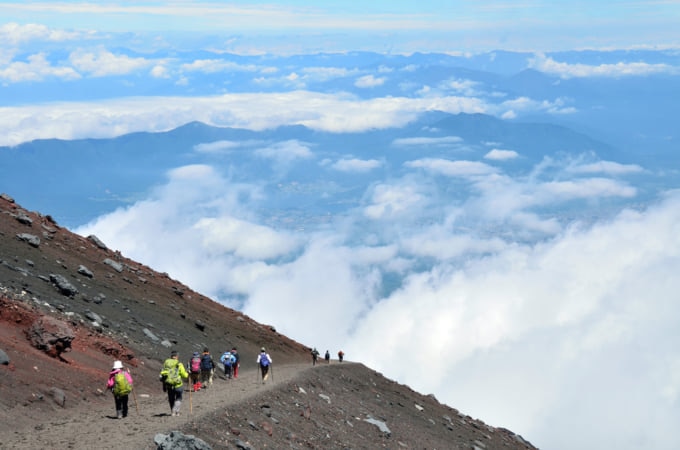
Photo by Hachi888/Shutterstock
There are a total of four trails that make their way up to the summit of Mt Fuji, each starting at different places and taking a different route to the top.
Yoshida
The most popular of the trails, the Yoshida trail is the easiest to complete, allowing climbers a gentle ascent up the mountain with plenty of stops along the way. For this reason it's also the most popular and almost any day you choose to climb will be busy. If you're planning to climb at night to get to the top for sunrise, climbing up this way can often mean having to stop and queue as you wait for others to climb up. During the day tends to be a little less busy. It's also the easiest stop to get to from Tokyo, being near to Kawaguchiko.
Subashiri
The Subashiri Trail is less busier for most of the journey, but joins up with the Yoshida Trail at the eight station. If climbing all the way to the top seems like a little too much for you, there's a short route from the 5th Station here that goes to Kofuji, a smaller peak the juts off the side of the mountain. You can reach it in about 20 minutes.
Gotemba
Starting lower down than the other trails, Gotemba's fifth station is also the least developed with only a shop and toilets on offer and few huts along the way. Due to starting at a lower elevation, it'll take much longer too, at least seven to eight hours. For this reason however, it's also often the least popular and less likely to get busy on the slopes.
Fujinomiya
The Fujinomiya Trail starts at the highest point out of the trails on the mountain at 2400 meters and therefore takes the shortest time, usually at least four hours, to get to the top.
When to Go
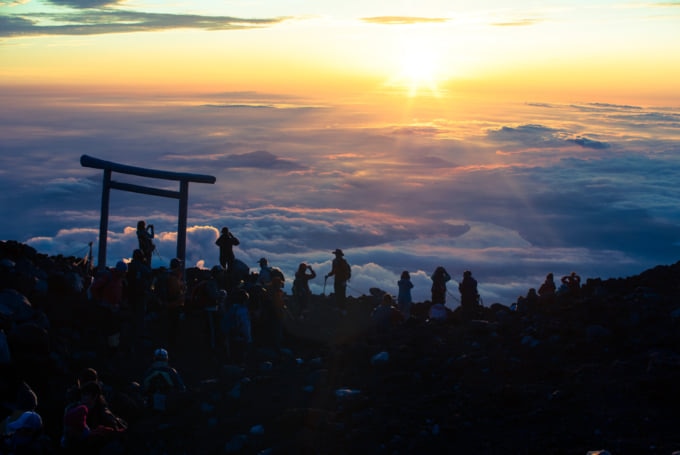
Photo by Wongkarho/Shutterstock
To avoid the crowds, make sure not to climb the mountain during Obon, a holiday period in Japan that usually lasts for a week in mid August. Weekends will always be busier than in the week and any three days weekends such as Marine Day, a national holiday at the end of July, will be particularly busy.
Other Tips
While the mountain can be relatively easy to climb if conditions are perfect, it shouldn't be underestimated. As the tallest mountain in Japan, it's a long journey to the top and even those who regularly exercise should take frequent stops to rest.
If climbing during the day, make sure to bring sunscreen, even on cloudy days it's easy to get sun burnt at high elevations.
The summit of Mt Fuji is 3,776 meters above sea level and having breathing difficulties from altitude sickness can be a common occurrence for those not used to being at high elevations. You'll find places selling air canisters at the top, but if you think you might suffer from altitude sickness, bring medicine to elevate symptoms. If you feel light-headed or have difficulty breathing while at the summit, it's best to make the descent as soon as possible.
While food and drinks can be bought at the summit, they can be quite expensive. It's recommended to buy drinks and snacks before climbing and take them in a backpack.
If you're looking for some beautiful resorts with views of the mountain, check out this article Luxury Resorts and Hotels with Views of Mount Fuji to Stay at Near Tokyo.

